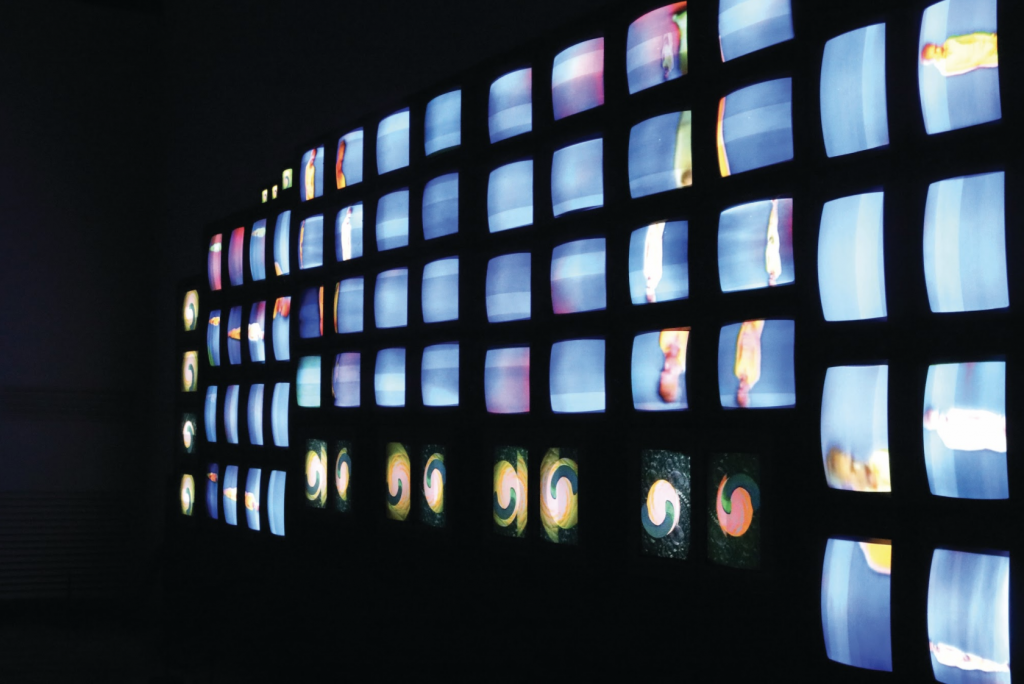A spectrum of colors lit the wall filled with small yet unique photos of Korean national heritages. The robot shaped as the PyeongChang Olympic mascot Soohorang welcomed the visitors in the entrance, showing a peek of what awaited them in the galleries.
Built to promote information and communication technology (ICT) in Korea, the ICT hall showcased not only Korea’s an interactive platform to experience technology but also modern art. The hall was planned by the Ministry of Science, Technology, and Communication and highly promoted by South Korean technology firms, notably KT Corporation.
Highlighting the flow of K-Art, ICT hall began with a gallery of Korean modern art as well as media art. Although the gallery has artworks from a number of rising artists, it held much focus to the renowned media artist Paik Nam-June, filling up much of the first floor with his work. Most notably, “Turtle,” one of Paik Nam-June’s most famous works, was displayed along with chandeliers made up of antique television screens along the ceiling. The mysterious song and smoke that comes periodically brought a mystical atmosphere to the gallery.
“I thought that the ICT hall provided a really interactive way to experience Korean culture and its rising technology,” said Ashley Kim (10), a visitor of the ICT hall in mid February. “It was interesting to see such famous works at a close distance while also having fun with technology.”
Along with art, the ICT hall also provided an interactive gallery for ICT in which the visitors could first handedly experience rising technologies. 5G network, an improved network system than the current 4G system, was displayed as well, allowing visitors to experience the faster speed and better quality screens that 5G provides. The ICT hall also allowed guests to use virtual reality (VR) goggles to experience virtual snowboarding and bobsleigh.
The ICT hall showed insight to the prospective future in Korea as well as the world. While the incorporation of art within the portrayal of future technology expressed modern Korean culture, the guests’ interaction with technology also added hope for a more promising future.

